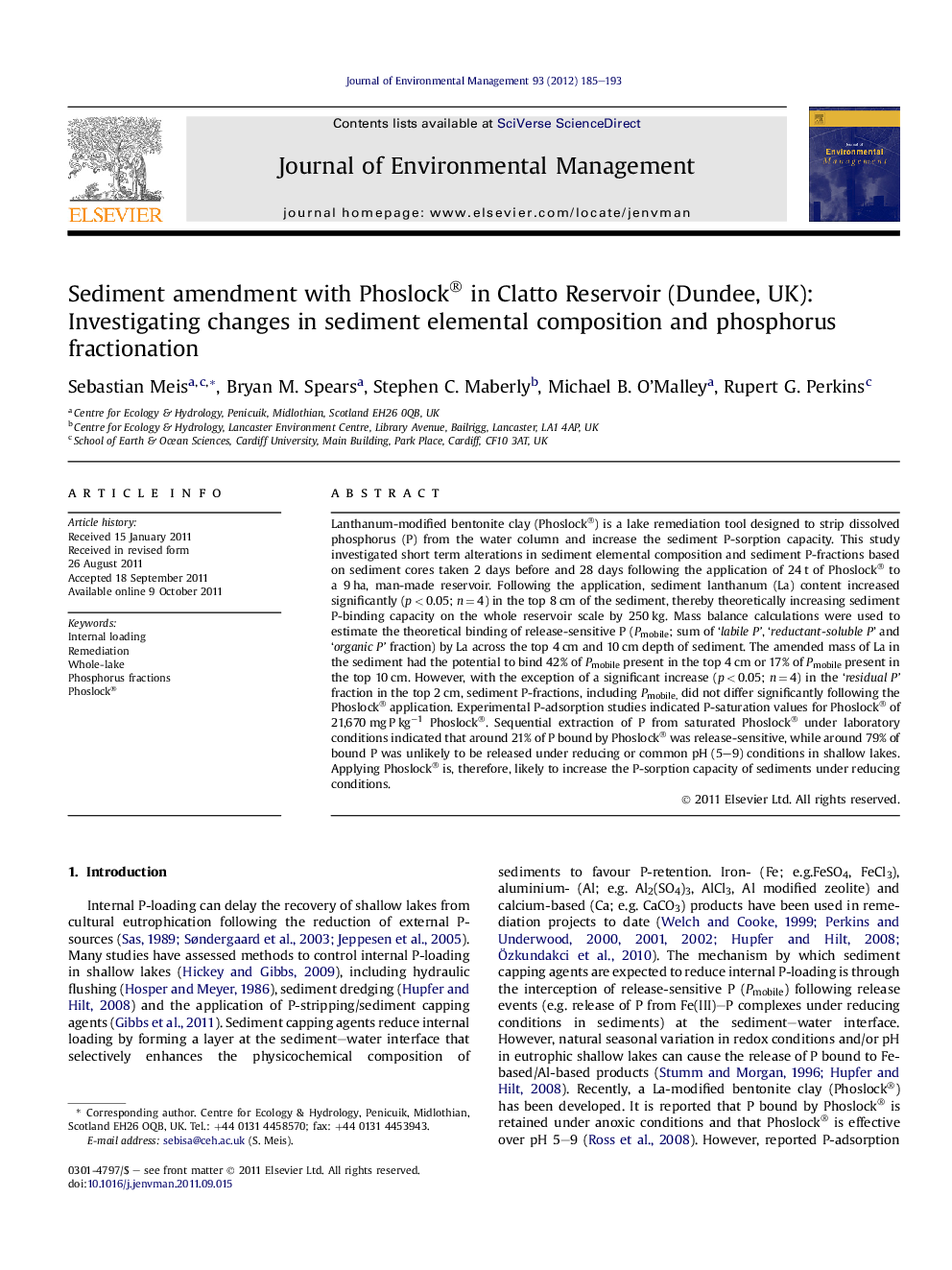| Article ID | Journal | Published Year | Pages | File Type |
|---|---|---|---|---|
| 1056980 | Journal of Environmental Management | 2012 | 9 Pages |
Lanthanum-modified bentonite clay (Phoslock®) is a lake remediation tool designed to strip dissolved phosphorus (P) from the water column and increase the sediment P-sorption capacity. This study investigated short term alterations in sediment elemental composition and sediment P-fractions based on sediment cores taken 2 days before and 28 days following the application of 24 t of Phoslock® to a 9 ha, man-made reservoir. Following the application, sediment lanthanum (La) content increased significantly (p < 0.05; n = 4) in the top 8 cm of the sediment, thereby theoretically increasing sediment P-binding capacity on the whole reservoir scale by 250 kg. Mass balance calculations were used to estimate the theoretical binding of release-sensitive P (Pmobile; sum of ‘labile P’, ‘reductant-soluble P’ and ‘organic P’ fraction) by La across the top 4 cm and 10 cm depth of sediment. The amended mass of La in the sediment had the potential to bind 42% of Pmobile present in the top 4 cm or 17% of Pmobile present in the top 10 cm. However, with the exception of a significant increase (p < 0.05; n = 4) in the ‘residual P’ fraction in the top 2 cm, sediment P-fractions, including Pmobile, did not differ significantly following the Phoslock® application. Experimental P-adsorption studies indicated P-saturation values for Phoslock® of 21,670 mg P kg−1 Phoslock®. Sequential extraction of P from saturated Phoslock® under laboratory conditions indicated that around 21% of P bound by Phoslock® was release-sensitive, while around 79% of bound P was unlikely to be released under reducing or common pH (5–9) conditions in shallow lakes. Applying Phoslock® is, therefore, likely to increase the P-sorption capacity of sediments under reducing conditions.
► Whole lake application of La-modified bentonite for internal P load management. ► Post-application sediment La content significantly higher in top 8 cm. ► Post-application mobile sediment P fractions not significantly lower. ► High experimental P binding capacity of 21,670 mg P kg−1Phoslock®. ► Phoslock® increases refractory sediment P fractions.
